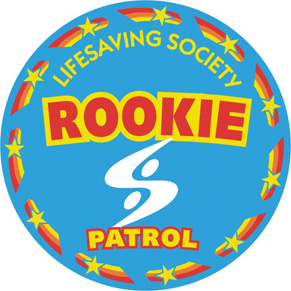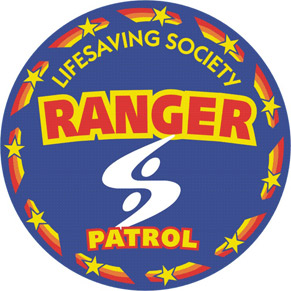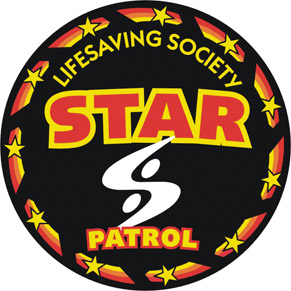Swimming Lessons
- Home
- Swimming Lessons
A head start on learning to swim or becoming a leader!
From Youth lessons to life saving leadership courses.
Parent & Tot
Spend quality time with your child while you both have fun and learn and socialize. Through structured in-water interaction between parent and child, we stress the importance of play in developing water-positive attitudes and skills. We provide Lifesaving Society Water Smart® tips on keeping your child safe in any aquatic setting. Certified instructors provide guidance and answers to your questions.
- Entries and exits
- Surface support
- Underwater skills
- Swim to Survive® skills
- Movement / Swimming skills
- Fitness
- Water Smart® education
PARENT & TOT 1, 2, 3
Preschool
Give your child a head start on learning to swim. The Lifesaving Society Preschool program develops an appreciation and healthy respect for the water before these kids get in too deep.
- Entries and exits
- Surface support
- Underwater skills
- Swim to Survive® skills
- Movement / Swimming skills
- Fitness
- Water Smart® education
Swimmer
The Lifesaving Society’s 6-level Swimmer program makes sure your children learn how to swim before they get in too deep. Swimmer progressions accommodate children 5 years and older including absolute beginners as well as swimmers who want to build on the basics.
- Entries and exits
- Surface support
- Underwater skills
- Swim to Survive® skills
- Movement / Swimming skills
- Fitness
Water Smart® educationAs an integral part of the Swim for Life® program, Water Smart education provides information and experiences that helps participants make smart decisions when in, on and around water and ice.
Rookie Patrol
Swimmers continue stroke development with 50 m swims of front crawl, back crawl and breaststroke. Lifesaving sport skills include a 25 m obstacle swim and 15 m object carry. First aid focuses on assessment of conscious victims, contacting EMS, and treatment for bleeding. Fitness improves in 350 m workouts and 100 m timed swims.

- Swim 25 m or yd. head-up front crawl or breaststroke.
- Demonstrate ready position with a stationary scull for 30 sec.
- Carry a 2.3 kg (5 lb.) object 15 m or yd. using swimmer’s choice of lifesaving kick.
- Demonstrate a foot-first and a head-first surface dive to a maximum depth of 2 m.
- Demonstrate 25 m or yd. legs-only using swimmer’s choice of lifesaving kick.
- Demonstrate the ability to inflate 2 items of clothing and use as a buoyant assist.
- Swim 25 m or yd. using any stroke. Demonstrate the ability to swim under an obstacle
located at the halfway point. - Swim front crawl, back crawl, and breaststroke (50 m or yd. each).
- Complete a 350 m or yd. workout on 3 different occasions throughout the training course. Warm-up: 100 m or yd.; Work set: 6 x 25 m or yd. any stroke on 60 sec.; Cool down: 100 m or yd.
- Swim 100 m in 3 min. or better (100 yd. in 2:40 min.) using any stroke or any combination of strokes of the swimmer’s choice.
- Demonstrate primary assessment of a conscious and cooperative victim who describes his or her chief complaint and how injury occurred.
- Demonstrate the ability to recognize when to call EMS and how to do it.
- Demonstrate primary assessment and appropriate care for a victim with external bleeding.
- Look at the aquatic facility for 10-15 seconds. Turn and describe what you saw.
- a) Demonstrate ability to simulate in the water the appearance of a weak swimmer and a non-swimmer. b) Demonstrate ability to recognize the difference between a weak swimmer and non-swimmer.
- From a standing position on land, throw a buoyant aid with line to hit a target on the surface of the water as many times as possible within 30 sec.
Ranger Patrol
Ranger Patrol features development of front crawl, back crawl and breaststroke over 75 m each, a 100 m lifesaving medley and timed 200 m swims.

- Demonstrate 1 forward AND 1 backward somersault in the water as a continuous sequence.
- Stride entry and swim 25 m or yd. head-up front crawl or breaststroke. Assume ready position.
- Demonstrate 25 m or yd. eggbeater kick on back.
- Support a 2.3 kg (5 lb.) object for at least 1 minute in deep water.
- Head-up approach into surface dive to a maximum depth of 2 m. Swim underwater for at least 2-3 m or yd. to recover a small object. Surface and carry object to starting point.
- Demonstrate an assisted removal of a conscious victim.
- Swim front crawl, back crawl, and breaststroke (75 m or yd. each).
- Swim a 100 m or yd. individual medley as follows: 25 m or yd. each of lifesaving kick, back crawl, breaststroke, front crawl.
- Swim 200 m in 6 minutes or better (200 yd. in 5:20 min.) using any stroke or combination of strokes of the swimmer’s choice.
- Demonstrate a primary assessment including hazards and ABCs on an unconscious, breathing victim.
- Demonstrate emergency care for a victim in shock.
- Simulate the appearance and treatment of a conscious adult or child victim with an obstructed airway.
- a) Demonstrate ability to simulate in the water the appearance of a weak swimmer, a non-swimmer and an unconscious victim. b) Demonstrate ability to recognize the difference between a weak swimmer and non-swimmer, and to recognize the unconscious victim. c) Demonstrate the ability to recognize and avoid victims who present a danger to the rescuer.
- Perform a non-contact rescue using a buoyant aid. Approach 20 m or yd. and encourage victim to safety while maintaining a safe distance and calling for assistance. Rescuer performs appropriate follow-up procedures, including treatment for shock.
Star Patrol
Star Patrol demands good physical conditioning and lifesaving judgment. Participants develop lifesaving and first aid skills; further refine front crawl, back crawl and breaststroke over 100 m each; and complete 600 m workouts and 300 m timed swims.

- Demonstrate AT LEAST TWO different entries with different aids.
- Entry with aid and swim 25 m or yd. head-up front crawl or breaststroke. Assume ready position and demonstrate ability to scull forward, backward and turn.
- Demonstrate defence methods from the front, side and rear.
- Demonstrate eggbeater kick showing ability to travel, change direction and height levels.
- Carry a 4.5 kg (10 lb.) object 25 m or yd. using swimmer’s choice of lifesaving kick.
- Demonstrate the removal of an unconscious victim with the assistance of an untrained bystander.
- Head-up approach into head-first surface dive to a maximum depth of 2 m. Swim underwater for 5-10 m or yd. and surface. Foot-first surface dive (maximum depth 2 m), recover an object and return it to the starting point.
- Demonstrate in shallow water, the ability to turn a victim face-up and support the face above the surface.
- Swim front crawl, back crawl, and breaststroke (100 m or yd. each).
- Complete a 600 m or yd. workout at least 3 times during the training course. Warm-up: 25 m or yd. lifesaving kick, and 50 m or yd. each of back crawl, breaststroke, front crawl; Stroke drills: 5 x 25 m or yd.; Work set: 4 x 50 m or yd. on 90 sec.; Cool down: 100 m or yd.
- Swim 300 m in 9 minutes or better (300 yd. in 8:00 min.) using any stroke or combination of strokes of the swimmer’s choice.
- Demonstrate the recognition and care of a bone or joint injury.
- Demonstrate the recognition and care of a victim suffering respiratory distress from asthma or a severe allergic reaction.
- From 3 different heights or positions, locate and describe an object located on the bottom or below the surface.
- Perform a rescue of a weak swimmer or non-swimmer with a towing aid. Swim approach 20 m or yd. and tow victim to safety showing ability to avoid contact. Rescuer performs appropriate follow-up procedures, including treatment for shock.
